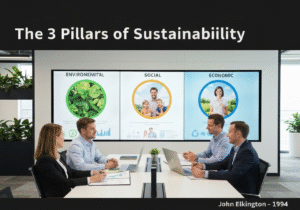Pour construire un commercialisation avec un petit groupe de personnes dévouées.
- Méthodologies : Lean Sigma, Fabrication
Marketing de proximité

Marketing de proximité
- Méthodologie Agile, Positionnement de la marque, Expérience client, Marketing numérique, Innovation, Commercialisation, Stratégie marketing, Ingénierie sociale
Objectif :
Comment il est utilisé :
- Une stratégie de marketing qui part d'un petit groupe de personnes passionnées par un produit ou une cause et qui les encourage à passer le mot à leurs réseaux. Elle s'appuie souvent sur le bouche-à-oreille et les médias sociaux.
Avantages
- Peut être très rentable ; Peut créer une base de clientèle solide et fidèle.
Inconvénients
- La dynamique peut être lente à se mettre en place ; le message peut être difficile à contrôler.
Catégories :
- Clients et marketing
Idéal pour :
- Lancer un nouveau produit ou service avec un budget limité en tirant parti du marketing de bouche à oreille.
Le marketing de proximité est particulièrement efficace dans des secteurs tels que la technologie, la santé et le bien-être, et les biens de consommation, où l'innovation et l'engagement de la communauté sont primordiaux. Cette approche peut être mise en œuvre avec succès lors de la phase de lancement d'un produit, où l'engagement des premiers utilisateurs et des influenceurs peut créer un buzz organique. Les entreprises peuvent sélectionner des ambassadeurs de la marque parmi les utilisateurs passionnés qui peuvent communiquer leurs expériences authentiques, renforçant ainsi leur crédibilité. Les startups et les petites entreprises disposant d'un budget marketing limité ont souvent recours au marketing de proximité, car l'exploitation des réseaux existants permet de réduire les coûts tout en augmentant la portée de l'action. Des études de cas illustrent des initiatives populaires réussies, telles que l'utilisation de plateformes de médias sociaux comme Instagram et TikTok pour générer du contenu généré par les utilisateurs, ce qui peut donner un coup de pouce significatif à la visibilité et à l'engagement. La collaboration avec les événements Les expériences de type "pop-up" peuvent également favoriser l'interaction avec la communauté et permettre aux participants de devenir des défenseurs de la marque qui partagent leur enthousiasme au sein de leurs cercles. Des individus ou de petites équipes au sein d'une entreprise, comprenant souvent des développeurs de produits, des responsables des médias sociaux et des responsables de l'engagement communautaire, initient généralement cette méthodologie, créant un environnement collaboratif qui invite les clients à participer à l'histoire de la marque. L'engagement direct avec les clients permet non seulement de les fidéliser, mais aussi d'obtenir un retour d'information précieux pour l'amélioration continue des produits et des services.
Principales étapes de cette méthodologie
- Identifier un groupe de niche passionné et engagé autour du produit.
- Engagez-vous auprès de ce groupe en lui fournissant des informations exclusives ou un accès anticipé.
- Encouragez le partage par des incitations à la recommandation ou des récompenses.
- Faciliter le partage sur les médias sociaux et autres plateformes.
- Tirer parti du contenu généré par les utilisateurs pour accroître la portée de l'action.
- Suivre les conversations et les réactions du public de base.
- Améliorer le produit en fonction des commentaires et des réactions de la communauté.
- Amplifier les exemples de réussite et les témoignages des premiers utilisateurs.
- Intensifier les efforts d'engagement en s'appuyant sur des réseaux plus larges.
Conseils de pro
- Identifiez et cultivez les défenseurs de la marque parmi vos utilisateurs les plus engagés, en leur offrant des récompenses exclusives ou un accès anticipé aux produits en échange de leur fidélité et de leurs efforts de promotion.
- Créez un contenu interactif et partageable qui résonne avec les valeurs de votre public et différencie votre produit, améliorant ainsi la portée organique et l'engagement.
- Tirez parti des communautés en ligne existantes et des forums de niche pour lancer des conversations, en encourageant des discussions organiques sur votre produit dans des contextes pertinents.
Lire et comparer plusieurs méthodologies, nous recommandons le
> Référentiel méthodologique étendu <
ainsi que plus de 400 autres méthodologies.
Vos commentaires sur cette méthodologie ou des informations supplémentaires sont les bienvenus sur le site web de la Commission européenne. section des commentaires ci-dessous ↓ , ainsi que toute idée ou lien en rapport avec l'ingénierie.
Contexte historique
1990
1990
1992
1996
1998
2000
2000
1990
1990
1992
1994
1997
1999-05-01
2000
2002
(si la date est inconnue ou n'est pas pertinente, par exemple "mécanique des fluides", une estimation arrondie de son émergence notable est fournie)















Articles Similaires
Programme directeur de production (PDP)
Personnalisation de masse
Entonnoir marketing
Audit marketing
Indice MAPO (Mouvement et assistance des patients hospitalisés)
Planification des ressources de fabrication (MRP II)